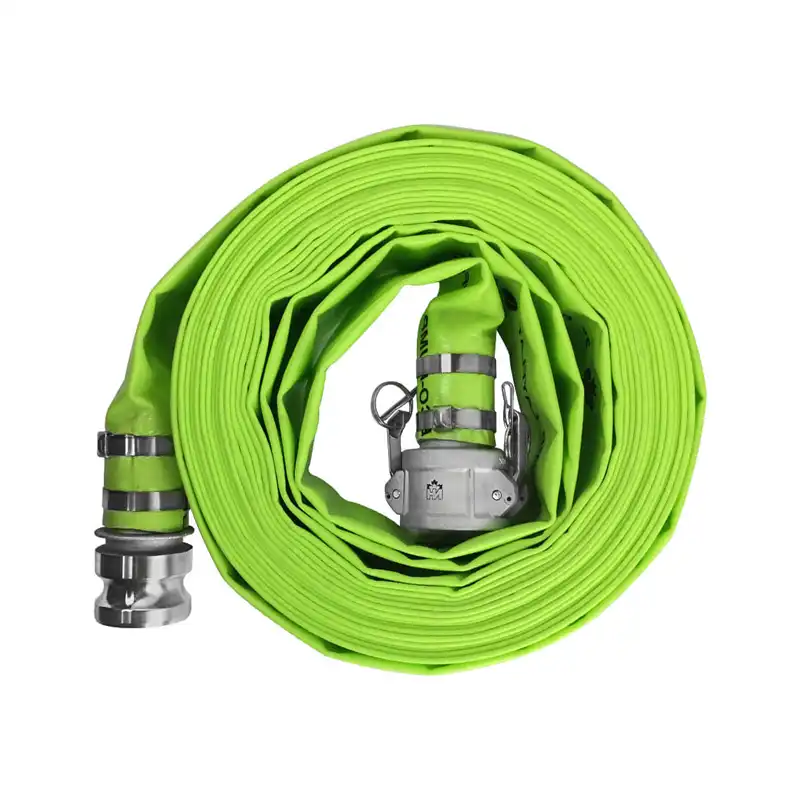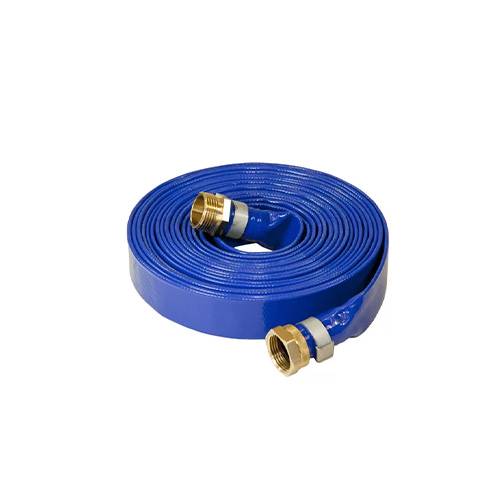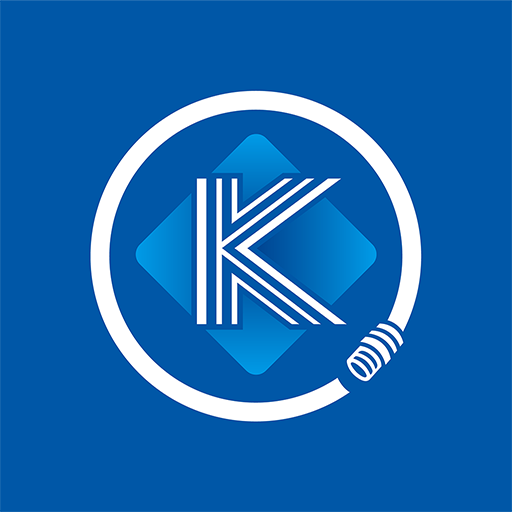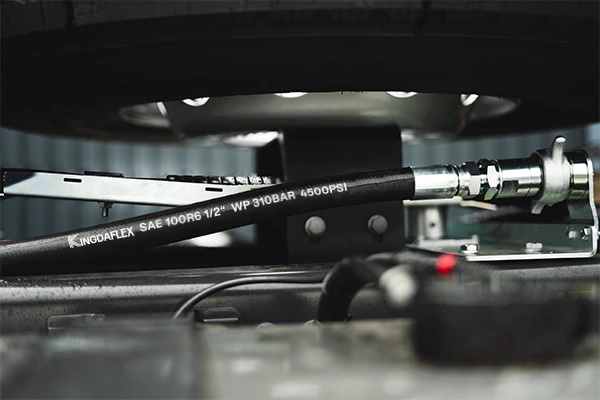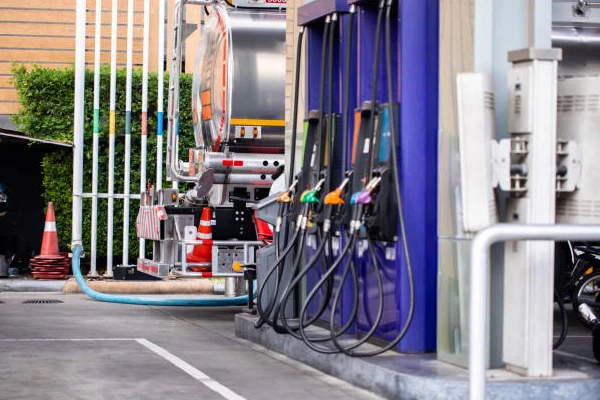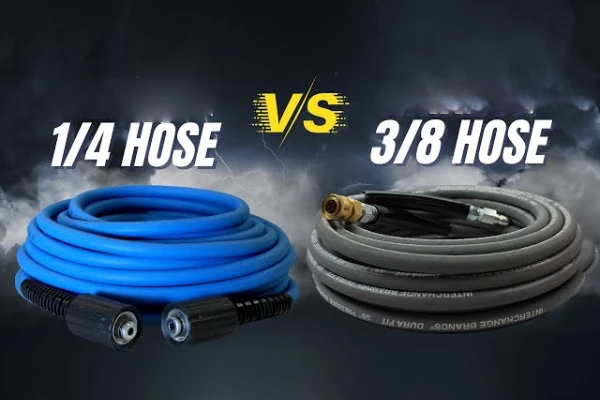Layflat hoses are a cornerstone of modern fluid transfer, known for their efficiency, durability, and compact storage. Their unique ability to flatten when not in use simplifies transport and deployment, making them indispensable across industries like agriculture, mining, and construction. Understanding their manufacturing process is key to appreciating their design and performance.
This guide takes you inside the factory to reveal the innovative technology behind these versatile hoses. We’ll explore the precise steps that transform raw materials into a seamless, high-strength product, from the initial extrusion of PVC to the final coiling process. It’s a fascinating journey into engineering and design.
What is Layflat Hose?
A layflat hose is a type of flexible, collapsible tubing used for the transfer of fluids. Its unique design allows it to be rolled up flat for compact storage and easy transport when not in use. It is typically constructed from a thermoplastic material like PVC or polyurethane, with a woven textile reinforcement (usually polyester or a similar synthetic yarn) embedded between the inner and outer layers.
This reinforcement provides the hose with its high tensile strength and pressure resistance, while the layflat feature makes it an efficient and practical solution for high-volume, temporary fluid transfer in agriculture, construction, and mining.
What are Layflat Hoses Made of?
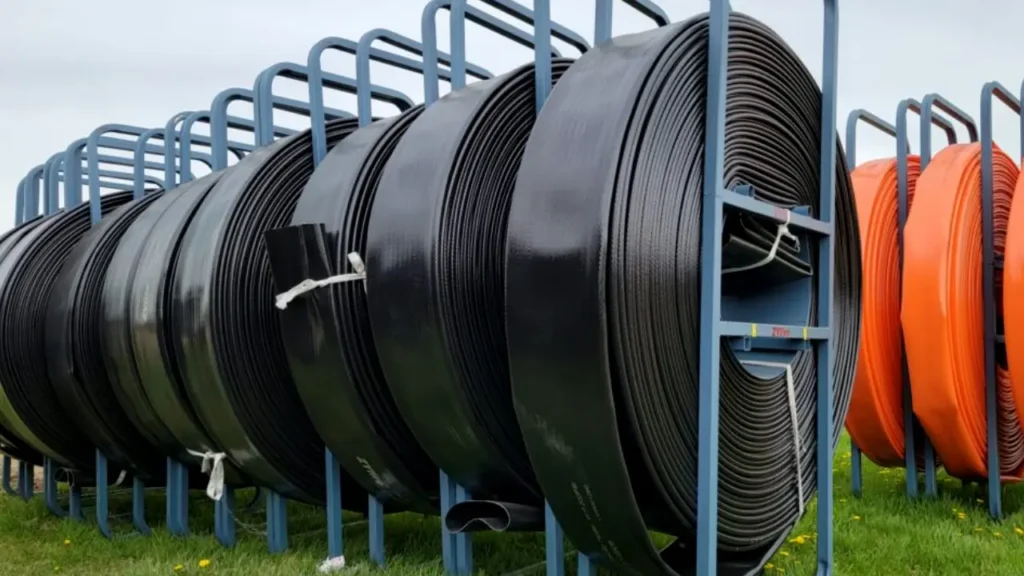
Layflat hoses are primarily made of two key components: a thermoplastic compound for the body and a woven textile for reinforcement. The main body is typically a thermoplastic material, such as PVC (polyvinyl chloride) or polyurethane, which provides a smooth inner and outer surface. This is what allows the hose to be flexible and to flatten for storage.
The strength and pressure resistance come from a reinforcing jacket, usually made of a high-tensile synthetic yarn like polyester, which is woven or braided between the inner and outer layers of the hose. This combination makes the hose lightweight yet durable and resistant to kinking.
- Thermoplastic Compound: The main body, made of PVC or polyurethane, provides a waterproof, flexible, and chemical-resistant conduit.
- Woven Textile Reinforcement: The internal jacket, made of high-tensile polyester, gives the hose its tensile strength and pressure rating, allowing it to maintain its shape under flow.
How to Manufacture Layflat Hoses?

The manufacturing of layflat hoses is a precise, multi-stage process that combines polymer science and textile engineering. It is designed to create a product that is both flexible and exceptionally durable for demanding fluid transfer applications.
Step 1: Raw Material Preparation
The process begins by preparing the raw materials. High-grade PVC resin is mixed with plasticizers, stabilizers, and colorants to create a compound with the desired flexibility, durability, and UV resistance. This careful blending is essential for the hose’s final performance characteristics.
Simultaneously, the reinforcement yarn, typically made of high-tensile polyester, is prepared. This yarn is spooled and loaded onto a circular loom, ready to be woven into a strong, seamless jacket that will provide the hose with its crucial pressure resistance.
Step 2: Co-Extrusion and Weaving
This is the core of the manufacturing process. The prepared polyester yarn is woven into a tubular jacket. At the same time, the PVC compound is precisely extruded and applied to both the inside and outside of the woven jacket, fusing all layers together in one continuous operation.
This co-extrusion process ensures a perfect, inseparable bond between the PVC and the woven reinforcement. This unique method eliminates the need for adhesives and prevents delamination, resulting in a single, homogeneous hose wall that is incredibly strong and pressure-resistant.
Step 3: Cooling and Solidification
Immediately after leaving the extrusion die, the hot, newly-formed hose is drawn through a cooling section. This is typically a long trough filled with cold water. Rapid cooling is critical to solidify the PVC, setting the hose’s dimensions and physical properties permanently.
The cooling process ensures that the hose maintains its perfect circular shape and wall thickness. This step is vital for dimensional stability, guaranteeing that the hose will not deform under pressure and can be easily rolled flat for storage when not in use.
Step 4: Printing and Marking
Once the hose has cooled and solidified, it is passed through a printing station. Here, essential information is applied to the outer surface of the hose, including the manufacturer’s name, brand, size, and working pressure rating. This ensures easy identification and traceability.
The printing is done using a durable, long-lasting ink that resists fading from sunlight and abrasion. This visible marking is a crucial safety feature, allowing users to quickly confirm that they are using the correct hose for their specific application.
Step 5: Cutting and Coiling
In the final stage, the hose is cut to the required lengths, typically in standard sizes like 100 or 200 feet, using automated cutters. The hose is then passed through a flattening roller to prepare it for its signature layflat form.
After being flattened, the hose is neatly rolled into a compact coil. Each finished coil undergoes a final quality inspection to check for defects before being packed and prepared for shipment. This simple design makes transportation and storage highly efficient.
Layflat Hose Applications

Layflat hoses are highly versatile and widely used across various industries due to their efficient design and durable construction. Their ability to handle high volumes of fluid and lay flat for easy storage makes them a go-to choice for applications requiring temporary or portable fluid transfer. From managing water in remote agricultural fields to handling dewatering challenges on a construction site, these hoses provide a reliable and flexible solution for a wide range of fluid-handling tasks.
- Agriculture: Used extensively for irrigation, water supply, and dewatering in fields and farms.
- Construction: Essential for dewatering sites, managing floods, and providing temporary water supply to work zones.
- Mining & Quarries: Employed for dewatering mines, quarries, and pits, as well as for transferring slurry and other industrial fluids.
- Municipalities: Used by fire departments for water delivery in non-fire emergencies and by public works for temporary water transfer and bypass.
- Marine: Applied in marine environments for fluid transfer, ballast operations, and general dewatering on ships and docks.
How to Choose Suitable Layflat Hoses?
Choosing a suitable layflat hose is a critical decision that depends on several factors related to its intended use. While they all share a similar design, variations in material and construction make certain hoses better suited for specific applications than others. Selecting the correct hose ensures optimal performance, extends its lifespan, and prevents potential failures that could lead to costly downtime or environmental damage.
- Determine the Application: First, identify the primary use. Is it for agricultural irrigation, construction dewatering, fire fighting, or industrial fluid transfer? The application dictates the required pressure rating and material compatibility.
- Check Pressure Rating: The hose’s Working Pressure (WP) and Burst Pressure (BP) are crucial. Choose a hose with a pressure rating that exceeds the maximum pressure of your system to ensure a safety margin.
- Evaluate Material Compatibility: Consider the fluid being transferred. A hose used for water may not be suitable for harsh chemicals, oil, or abrasive slurries. Ensure the inner and outer materials are compatible with the fluid and the surrounding environment.
- Assess Abrasion and UV Resistance: If the hose will be dragged over rough terrain or exposed to prolonged sunlight, you need a model with a robust outer jacket that resists abrasion and UV degradation.
- Consider Length and Diameter: Select the correct hose diameter to match your pumps and fittings. The length should be long enough to reach its destination without excessive tension but not so long that it causes unnecessary friction loss.
Conclusion
The manufacturing process of a layflat hose is a testament to modern engineering, combining material science with a precise co-extrusion method. By understanding how the PVC and polyester yarn are seamlessly fused, you gain insight into the durability, flexibility, and pressure resistance that define a high-quality product. This knowledge is essential for making informed purchasing decisions.
Ultimately, the performance of your fluid transfer system depends on the quality of its components. A well-manufactured layflat hose ensures reliable, uninterrupted operation, reducing the risk of leaks and costly downtime. It is an investment in efficiency and long-term performance for any project, big or small.
For all your fluid transfer needs, Kingdaflex is your trusted source for premium-quality, wholesale PVC layflat hoses. Our products are manufactured to the highest standards, ensuring a durable, reliable, and cost-effective solution for agricultural, industrial, and dewatering applications. Partner with us for hoses you can count on.


